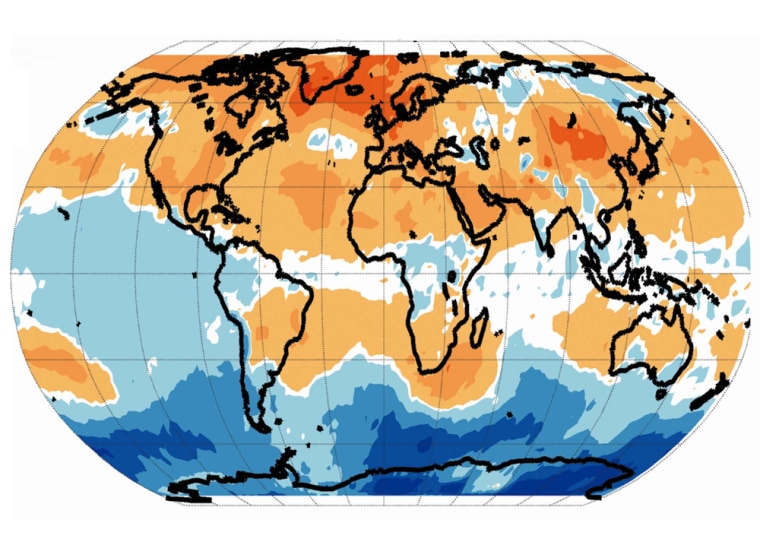Rivers of air that move both storms and airplanes around the planet have been creeping poleward over the past 26 years. The migration of these so-called "jet streams" has widened the planet's tropical belt and could expand dry regions around the world in coming decades, a new study reports.
"If they move another 2 to 3 degrees poleward in this century, very dry areas such as the Sahara Desert could nudge farther towards the pole, perhaps by a few hundred miles," said study team member John Wallace from the University of Washington.
The researchers used satellites to measure heat in the form of microwave radiation emitted by oxygen molecules in the atmosphere from 1979 to 2005.
The troposphere at 30 degrees latitude in both hemispheres — roughly the location of Austin, Texas, and Cordoba, Argentina — has warmed by about 1.5 degrees Fahrenheit (1 degree Celsius) during that time. The troposphere extends up to about 7.5 miles (12 kilometers) from Earth's surface and is the part of the atmosphere in which most weather occurs.
Anatomy of the air
The warming of the atmosphere at these latitudes causes the troposphere to expand and bulge poleward. This nudges the westerly-moving jet streams that blow through the troposphere farther away from the equator.
The finding was detailed in Friday's issue of the journal Science.
The tropical zone is the portion of Earth's surface located between the Tropic of Cancer at 23.5 degrees north latitude and the Tropic of Capricorn at 23.5 degrees south latitude. The tropics are characterized by hot weather and are among the richest sources of plant and animal species in the world.
Jet streams mark the northern and southern boundaries of the tropics, so their movements away from the equator means the tropics are effectively expanding.
Expanding deserts
The new results suggest that the tropics have expanded by 2 degrees latitude, or 140 miles (225 kilometers), over the past 26 years.
"It's a big deal," said study team member Thomas Reichler, a meteorologist at the University of Utah. "If this is true, it also would mean that subtropical deserts are expanding into heavily populated midlatitude regions."
The current study support previous findings that found accelerated subtropical warming of the troposphere could shift the paths of rainstorms and snowstorms poleward. This would reduce winter rainfall in places such as southern Europe and southern Australia, scientists say.
Less rainfall
The researchers think the overall effect of the tropical expansion could be similar to that of El Niño, a phenomenon in which warm water in the west Pacific moves eastward toward the Americas.
El Niño can cause warmer, drier summers, so tropical expansion might have contributed to the unusually dry conditions seen in the subtropical American Southwest and Mediterranean Europe in recent years.
It's still unclear whether the jet stream migration and tropical expansion were triggered by natural climate variation or human-caused global warming, the researchers said.
"One can certainly think of various mechanisms of how global warming-related changes in the atmosphere could induce the changes we see," Reichler said. "But it's very speculative at this point."
Another possibility, the researchers say, is that the depletion of Earth's ozone layer from pollutant such as refrigerated gases is mimicking patterns created by global warming and heating up the troposphere that way.
